|
|
GeoAstro Applets |
Astronomy |
Chaos Game |
Java |
Miscel- laneous |
Physics Quiz |
|
Brachistochrone
The curve that is covered in the least time is a brachistochrone curve. It is an upside down cycloid passing vertically through A and B. 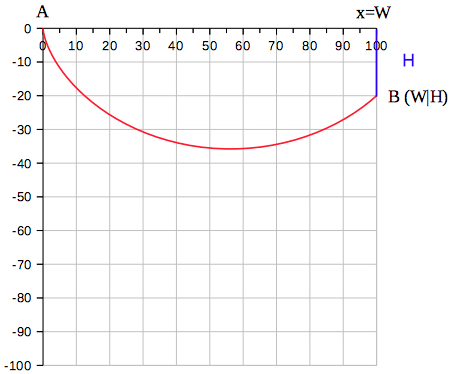
 The cycloid through the origin A, with a
horizontal base given by the line y = 0 (x-axis),
generated by a circle of radius R rolling over the
"positive" side of the base (y ≥ 0), consists of the
points (x, y), with
 where φ is a parameter,
corresponding to the angle through which the rolling
circle has rotated.
Fitting the maximum angle φm and the radius R and to reach point B(100m, H) WolframAlpha was used solving the equation:  (1) (1)Then the radius R can be
calculated by:
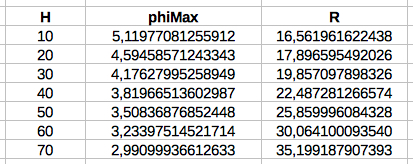 For steps 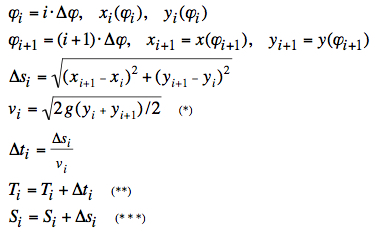 (*) applies
because of the energy law. TN (**)
is the total travel time from A to B, and SN
(***) the total arc length along the
cycloid from A to B.
The final velocity at B is: Furthermore the theoretical arc length is: The precision of the results for v, S,
and T by the formulas (3), (4), and (5) - compared
with (*), (**), and (***)
- is of course depending on the number of steps:
 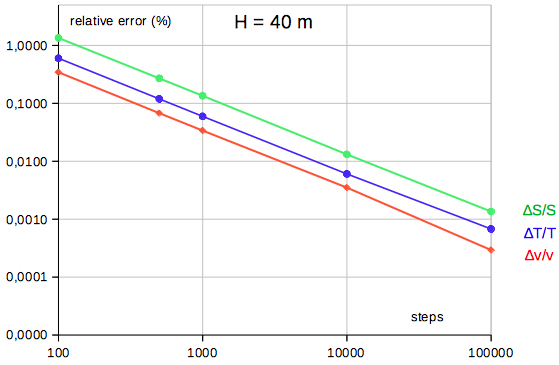 From (1), (2), and (5) we get:  T(φ) has a minimum of T=5.659 s at φ = π, using xm=100 m, g=9.81 m/s^2: 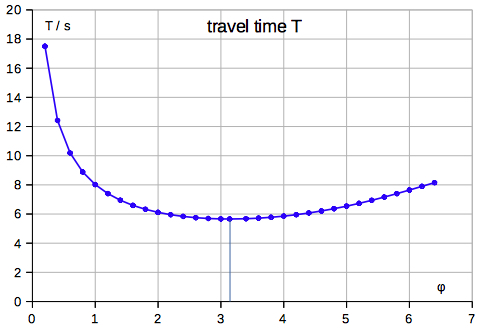 The minimum of travel time occurs at H=200m/pi = 63,66 m: 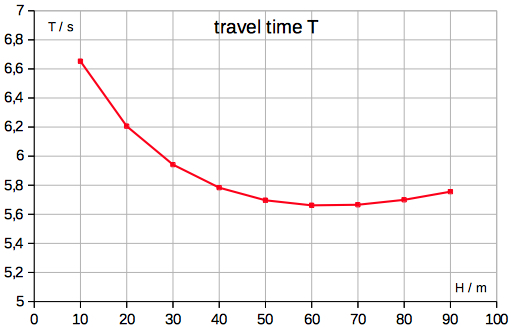 Example of results along the
brachistochone (∆H=30m, n=100,00 steps):
t = 5.94177 s is the numerical traval time, T = 5.9417 s the theoretical result by formula (5), s = 118.7115 m is the numerical arc length, S = 118.7115 m the theoretical result by formula (4).  You can add a root curve
and compare it with the brachistochrone:
Tautochrone A tautochrone or isochrone curve is
the curve for which the time taken by an object
sliding without friction in uniform gravity to its
lowest point B is independent of its starting point
A.
The curve is also a cycloid. 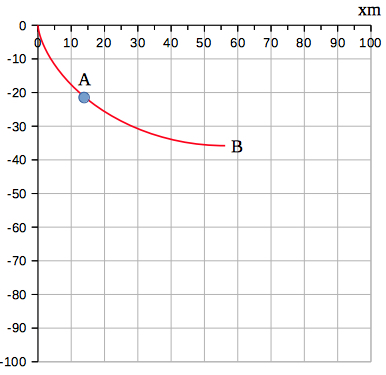 The coordinates of point B are
x=R·π
and y=2R
The time of descent is: |
| LinksLL |
| Galileo
and the Brachistochrone Problem The Brachistochrone The brachistochrone problem Brachistochrone curve (Wikipedia) Cycloid (Wikipedia) Zykloide (Wikipedia) (#) Time of Travel down Brachistochrone (ProofWiki) Courbe Brachistochrone Das Brachistochronenproblem Die Eigenschaften der Zykloide aus mathematischer, physikalischer und historischer Sicht (Diana Heuer) Tautochrone curve (Wikipedia) (##) Parabolic Segment (WolframMathWorld) |